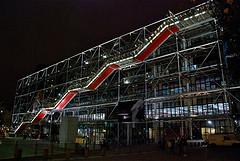 There are a few small disks composed of cartilage between each pair of adjacent vertebrae. These disks prevent the vertebrae rubbing each other and also act as natural shock absorbers of the column. When you jump in the air or turning the trunk to make mattes, the disks provide the vertebrae cushioning that they need. Ribs the heart, lungs and liver are all very important and fortunately accounts with ribs to protect them. The ribs act as a bone box around the chest.
There are a few small disks composed of cartilage between each pair of adjacent vertebrae. These disks prevent the vertebrae rubbing each other and also act as natural shock absorbers of the column. When you jump in the air or turning the trunk to make mattes, the disks provide the vertebrae cushioning that they need. Ribs the heart, lungs and liver are all very important and fortunately accounts with ribs to protect them. The ribs act as a bone box around the chest.
It is easy that notes the bottom of that box palpating you finger sides and the front of the body a few centimeters (or inches) below the heart. If you breathe deeply, also it will be easy notice the ribs in the front part of the body. Until you can see some thin children ribs through skin. Ribs go in pairs, and the left and right sides of each pair are exactly the same. The majority of the people has 12 pairs of ribs, but some people are born with one or more ribs over and others with one couple less. The 12 pairs of ribs join at the rear of the column, where the thoracic vertebrae holding them in place. The first seven pairs of ribs are joined by the anterior part of the body in the sternum, a very strong and sturdy bone located in the center of the chest that keeps those ribs in place.
The other pairs of ribs are not directly attached to the sternum. The following three pairs are joined to the upper ribs via cartilage. The last two pairs of ribs are known as floating ribs because they are not connected to the sternum or the upper ribs via cartilage. But fear not, those ribs may not be separate from the rest floating. Like the other ribs, they are well adhered to the spine by the back of the body.